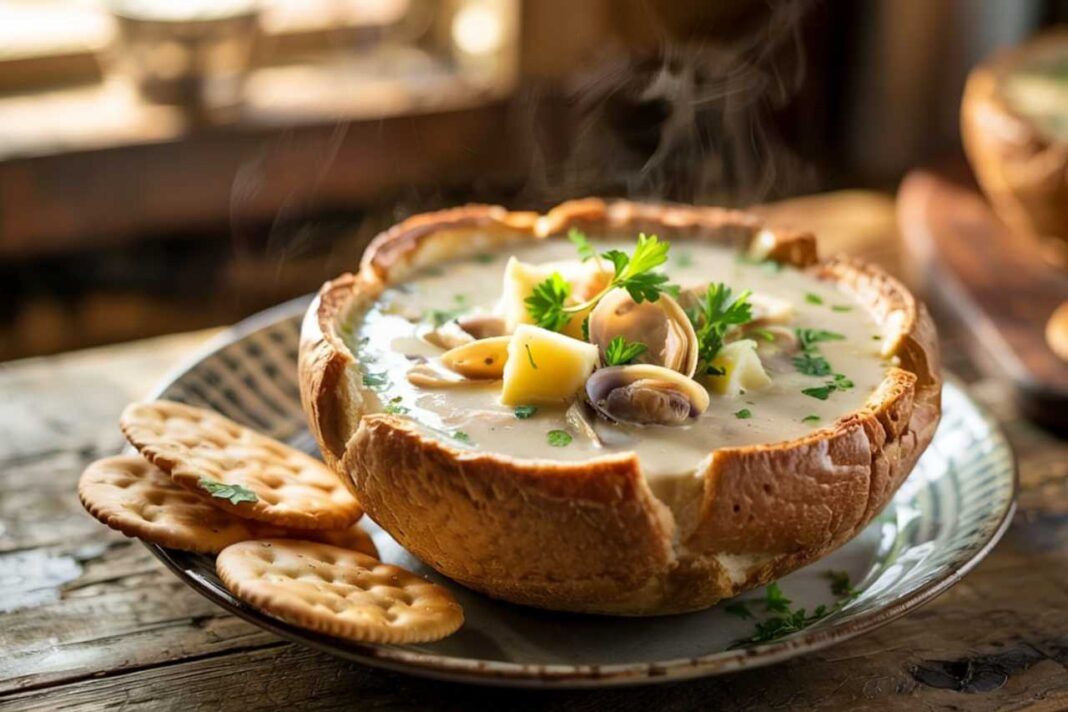Clam chowder is a classic comfort food known for its rich, creamy texture and delectable combination of clams, bacon, potatoes, and veggies. It can be prepared in different styles depending on one’s taste preferences. The authentic New England clam chowder recipe is among its most popular variations, as it features a solid balance of potatoes, a broth with just the right amount of creaminess, deeply cooked bacon, and tender clams.
Ingredients for traditional New England clam chowder
To prepare homemade New England clam chowder, one will require clam meat, a few pieces of thick-cut bacon, a large diced yellow onion, some diced celery, clam juice, a cup of water, russet potatoes (peeled and cut into cubes), and heavy cream. For taste, one can use salt and freshly ground black pepper.
Clams are the most important ingredient in this recipe. The clam meat must be chopped, frozen, and then defrosted before being used in the soup. Both fresh and canned clams will work, so either can be chosen depending on taste preferences. Canned clams are easily available at any food store, but according to many consumers, these may not taste as fresh. On the other hand, fresh clams are tender and flavorful, but one must clean them extensively before cooking. When making New England clam chowder with fresh clams, one can use varieties like quahogs, littlenecks, count-necks, cherrystones, and top-necks.
Easy New England clam chowder recipe
The recipe is quite easy to make at home. That said, it’s important to follow the steps perfectly to ensure the chowder is tasty and creamy.
- The first step involves cooking the bacon. In a large Dutch oven or pot, drop the bacon and cook for 8 to 10 minutes on a medium flame.
- Once the bacon releases most of its fat, add veggies like onion and celery and stir for 5 to 6 minutes until they soften. Although most classic New England clam chowder recipes feature potatoes and onions, some also use other vegetables, such as thyme or bay leaves.
- Now, to prepare the broth, pour in clam juice and water. At this point, also drop in the potatoes. Russet potatoes add rich flavors by releasing starch into the chowder and thickening its broth. Once done, sprinkle salt based on taste preferences and cover with a lid for around 15 minutes.
- After the broth simmers and the potatoes become tender, add the chopped clams and cream and stir for 2 to 3 minutes until the mixture simmers.
- Taste the chowder and add season with more salt if required. If not, ladle the soup into bowls, grind black pepper over them, and serve them with oyster crackers.
Traditional clam chowder can last 3 to 4 days in refrigerators. If frozen, one can eat it even after 4 to 6 months, although consuming it within 4 months is recommended.
Mistakes to avoid
It’s important to avoid mistakes when making New England clam chowder from scratch at home. Even tiny errors can change the taste and texture of the soup and spoil the experience.
Making the potatoes too mushy
Avoid overcooking the potatoes used in this recipe. This precaution is relevant regardless of whether the potatoes are cooked in the broth or simmered separately in water. Mushy potatoes will likely break down and lack texture. For maximum control and a creamy New England clam chowder, cook potatoes alongside the chowder, drain all the fluid from them, and add them towards the end of the preparation process.
Using too much thickener
While adding starch is recommended, do not thicken the broth so much that spoons get stuck in it during preparation. Remember, russet potatoes already have starch in them, which helps thicken the soup.
Oversalting
Oversalting any food can affect the taste. If the chowder seems under-salted after tasting, sprinkle only a little salt and then taste again. If still under-salted, sprinkle some more. Excessive salt cannot be removed from the chowder, so oversalting can spoil the taste and make the soup inedible.
Overcooking clams or fish
Some people go overboard while cooking clams or fish. Overcooking makes anything soft and sloppy. When overcooked, clams and fish also lose texture and taste.
Not using enough seafood
Be generous when using seafood in this recipe. Nobody likes a clam chowder that has lots of potatoes but just one or two clams. Lesser clams not only make the dish lackluster but drastically reduce its protein content.
New England clam chowder variations
Clam chowder can be called by different names depending on which part of New England they are famous in, such as Rhode Island Clam Chowder, Milky Maine Clam Chowder, and Connecticut Clam Chowder. One can also find versions of clam chowder in other parts of the country, such as Portuguese Clam Chowder and Manhattan Clam Chowder. Those who love seafood can explore multiple variations of the recipe at home.
